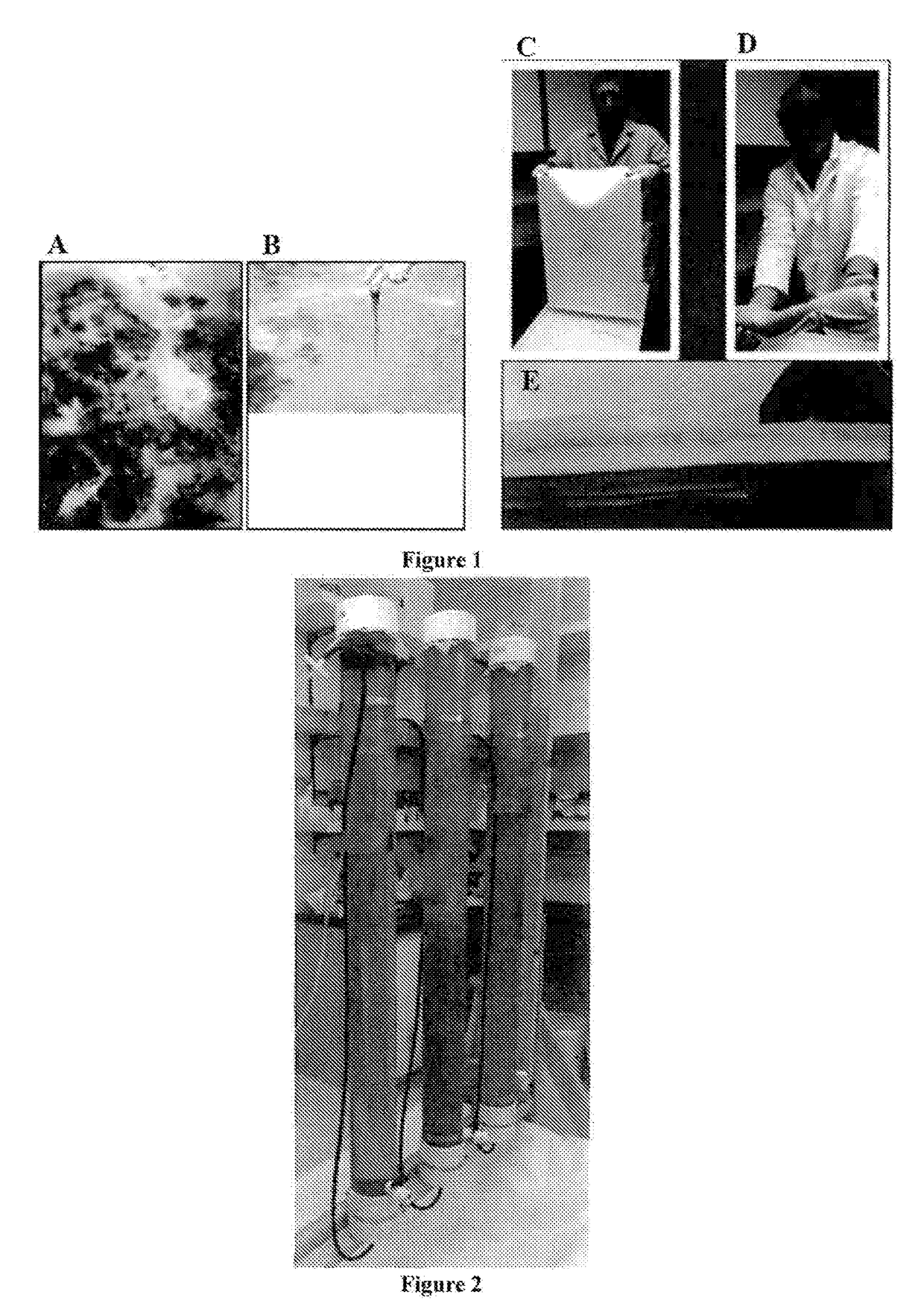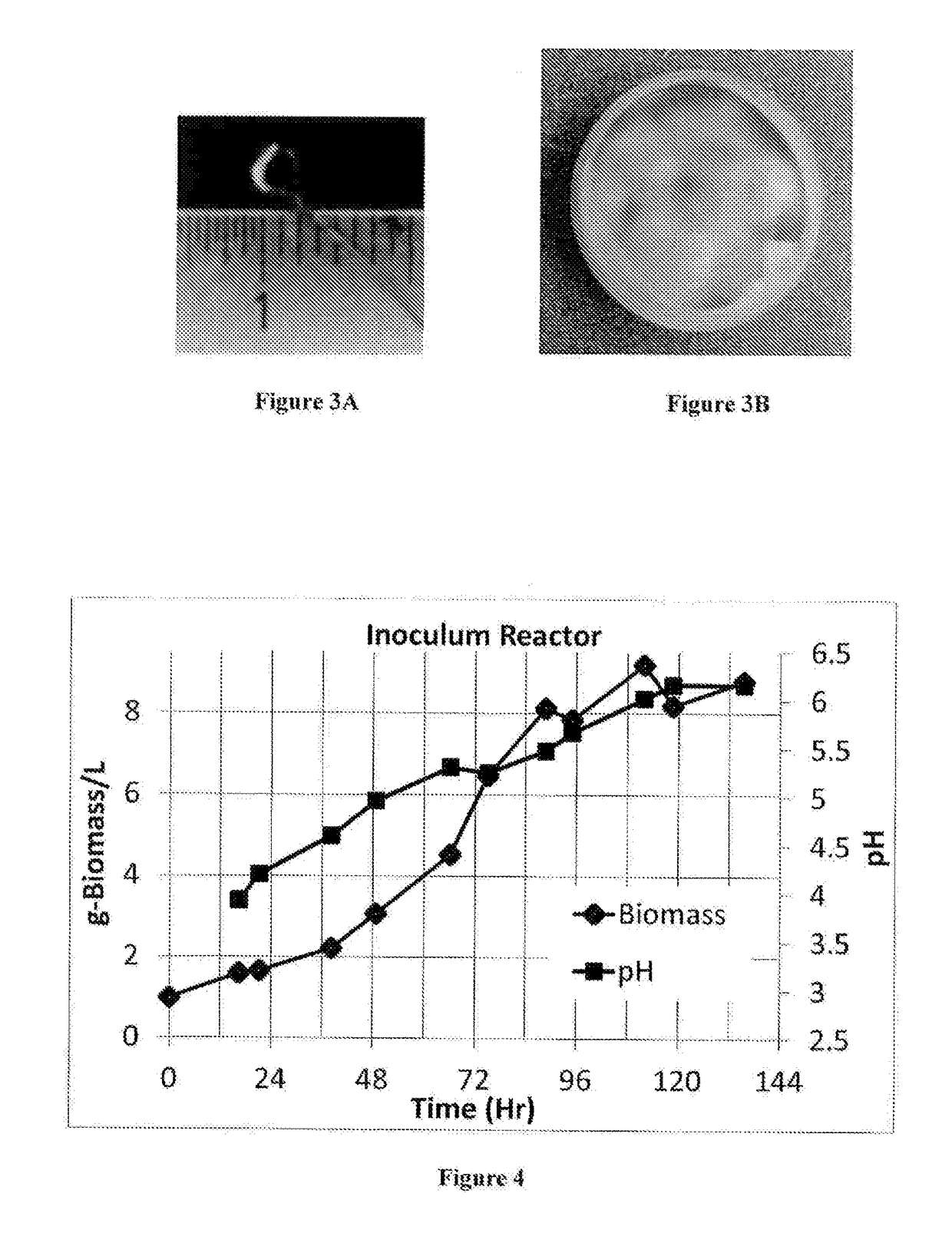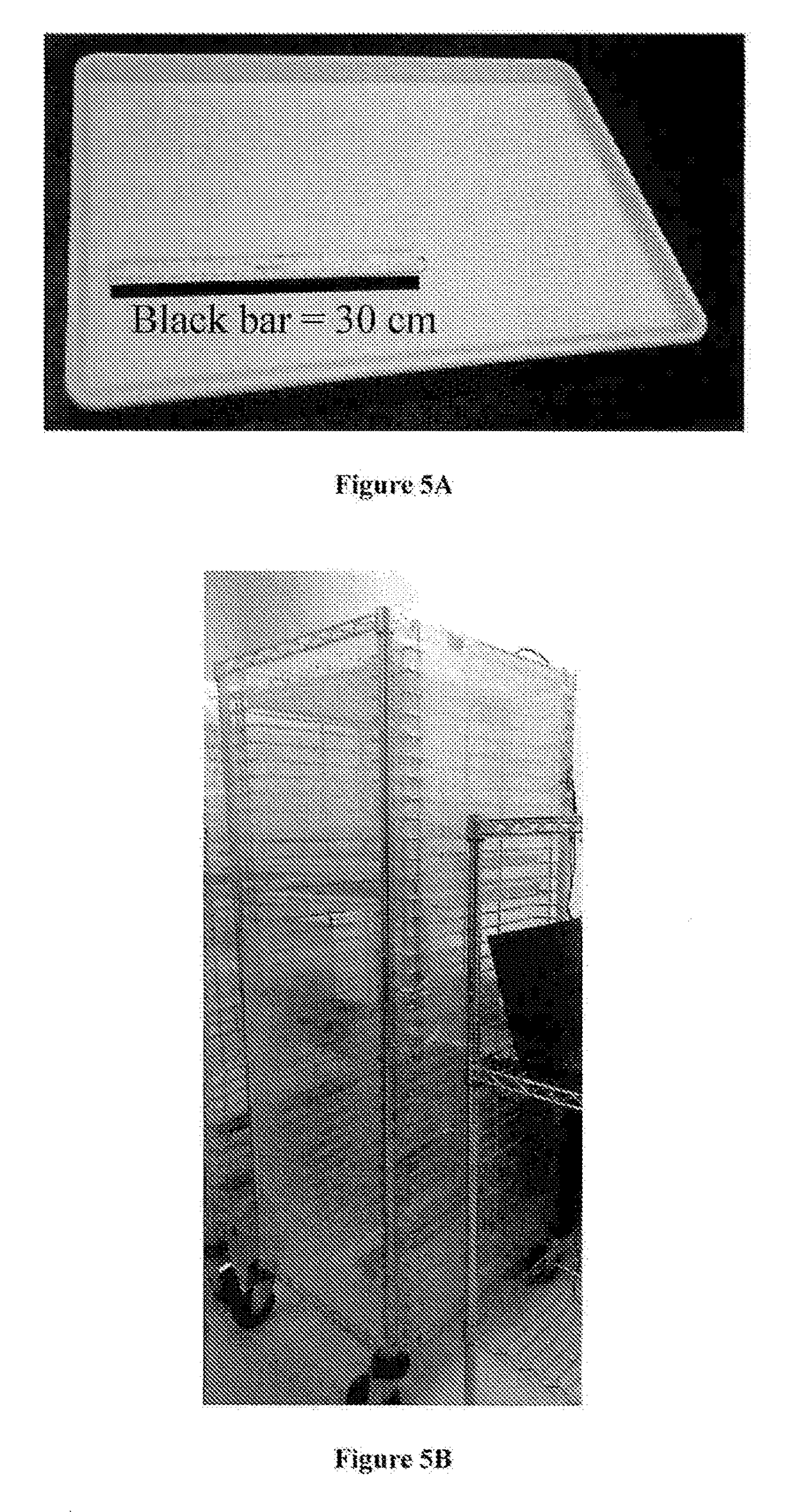Filamentous fungal biomats, methods of their production and methods of their use
a technology biomats, which is applied in the field of filamentous fungal biomats, methods of their production and methods of their use, can solve the problems of low conversion rate, low yield, and difficulty in separating one, and achieves rapid cell growth and high density
- Summary
- Abstract
- Description
- Claims
- Application Information
AI Technical Summary
Benefits of technology
Problems solved by technology
Method used
Image
Examples
example 1
7 in the Natural Environment
[0144]Naturally occurring strain MK7 is always associated with algae, archaea and bacteria in nature and is characterized by average densities of less than 0.5 g dry biomass / L spring water (FIG. 1). In addition, MK7 occurs in nature as “streamers.” Purcell et al. define “streamers” as follows: “Streamers are submerged aggregations of filamentous and other cell morphologies projecting into flowing water from a point of attachment” (Purcell et al. (2007) FEMS Microbiology Ecology 7 60:456-466). Strain MK7 as a percentage of total streamer biomass is less than 10%. Furthermore, strain MK7 biomass in nature is characterized by greater than 30% biomass as macro conidia cells, which are never found in surface fermentation biomats produced by the methods outline in this disclosure.
example 2
on of Artificial Media
[0145]MK7-1 liquid medium used in the following procedures was prepared by adding the ingredients listed in Table 1A to deionized water (18.2 Mohm), temperature between 22-30° C. followed by adjusting the pH to 2.8, pH adjusted lower with 13 N HCl. pH was measured using an Oakton Instruments model 150 pH meter and probe (Orangeburg, N.Y.). The medium was then boiled for 20 minutes and allowed to cool to room temperature (˜23° C.) prior to use. Immediately before adding the liquid medium, the pH is checked again using the Oakton Instruments 150 pH meter and probe and adjusted back to pH 2.8 if required.
[0146]MK7-3 liquid medium was prepared in the same way using the ingredients listed in Table 1B.
[0147]In some embodiments the carbon source used is not glycerol, but can be selected from various other carbon sources, such as sugars, glycerol, lignocellulosic materials, hydrolysates of lignocellulosic materials, municipal or agricultural waste, food processing wast...
example 4
Strain MK7 in Tray Reactors Via Surface Fermentation
[0155]Filamentous acidophilic MK 7 fungal strain, were grown in shallow tray reactors. It should be noted that different tray sizes are amenable to the teachings of this innovation. In this example, the inside dimensions of the polyethylene trays were 41.27 cm wide by 61.28 cm long with 2.54 cm tall sidewalls (total surface area available for mat growth=0.253 m2; FIG. 5; Winco, Idaho Falls, Id.). It is desirable that trays be clean of debris and chemicals as well as sterilized prior to use to minimize potential contamination. Consequently, prior to use, the trays were thoroughly washed with soap and warm drinking quality tap water (50-70 C), thoroughly rinsed with the warm tap water for 1 minute, and removal of all soap residues was validated. This was followed by spraying all surfaces of the trays until all surfaces were wetted with a solution of 70% isopropanol / 30% deionized water (18.2 Mohm) and wiping the trays with gloved hand...
PUM
 Login to View More
Login to View More Abstract
Description
Claims
Application Information
 Login to View More
Login to View More - R&D
- Intellectual Property
- Life Sciences
- Materials
- Tech Scout
- Unparalleled Data Quality
- Higher Quality Content
- 60% Fewer Hallucinations
Browse by: Latest US Patents, China's latest patents, Technical Efficacy Thesaurus, Application Domain, Technology Topic, Popular Technical Reports.
© 2025 PatSnap. All rights reserved.Legal|Privacy policy|Modern Slavery Act Transparency Statement|Sitemap|About US| Contact US: help@patsnap.com



